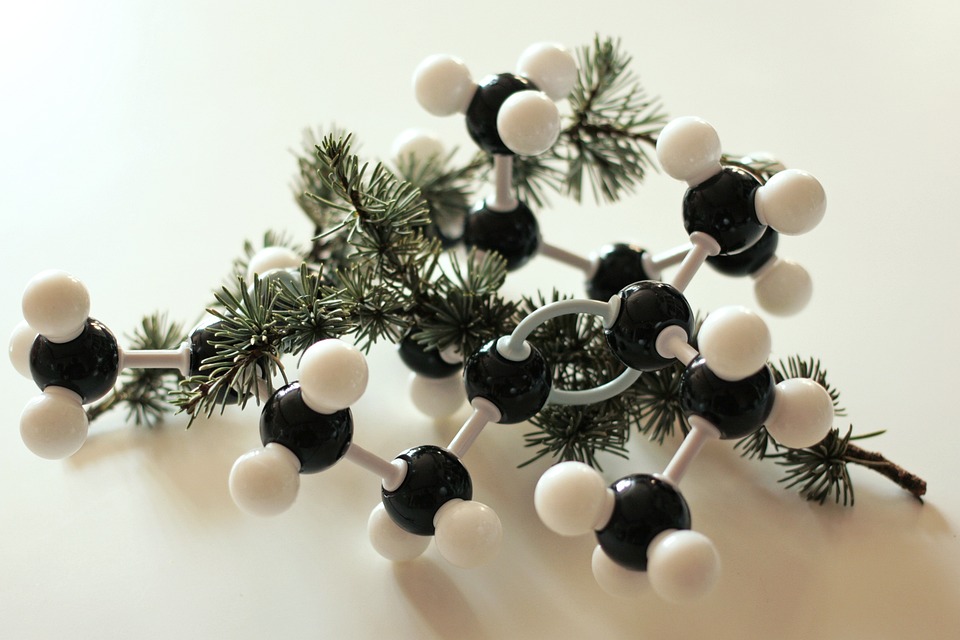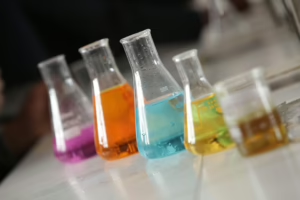The Chemistry of Color: How Molecules Create the Hues We Love
Introduction
Colors surround us in our daily lives, influencing our emotions, perceptions, and even behaviors. Despite their ubiquity, the science behind color is often overlooked. The intricate relationship between color and chemistry offers a fascinating lens through which to understand how various molecules interact with light to create the vivid hues we appreciate in nature, art, and even our clothing.
The Basics of Color
At its core, color is the result of the interaction between light and matter. When light strikes an object, certain wavelengths of light are absorbed while others are reflected. The wavelengths that are reflected determine the color that we perceive. For example, a leaf appears green because it absorbs red and blue wavelengths while reflecting green wavelengths.
The Electromagnetic Spectrum
Light is part of the electromagnetic spectrum, which includes a range of wavelengths from radio waves to gamma rays. The visible spectrum, which is the range of light visible to the human eye, spans approximately 380 to 750 nanometers. Each wavelength corresponds to a different color: violet, blue, green, yellow, orange, and red.
The perception of color is largely subjective, influenced by individual physiology and psychological factors. Understanding the molecular basis of color allows us to appreciate the intricate interplay of physics and biology that shapes our visual experience.
The Role of Molecules in Color Production
Molecules are the foundation of color. Specifically, they can absorb and emit light, leading to the creation of colors through various mechanisms. The most significant factors that give rise to color are the electronic structure of the molecules, the presence of chromophores, and the interaction of light with these structures.
Chromophores and Their Role
A chromophore is the part of a molecule responsible for its color. Chromophores contain conjugated systems of alternating single and multiple bonds. This arrangement allows electrons to become excited when they absorb photons of light. The energy difference between the ground state and the excited state corresponds to the specific wavelength of light absorbed, thus determining the color we perceive.
Example: Carotenoids
Carotenoids are pigments found in many plants, algae, and bacteria. These molecules contain long chains of conjugated double bonds, allowing them to absorb light primarily in the blue and green regions of the spectrum. The result is the vibrant yellow, orange, and red colors that characterize fruits and vegetables like carrots, tomatoes, and pumpkins.
Example: Anthocyanins
Anthocyanins are water-soluble pigments found in many plants, responsible for red, purple, and blue colors. They are commonly found in fruits like blueberries and raspberries as well as in the leaves of some trees during autumn. The color of anthocyanins can change depending on the pH of their environment, due to the structural changes that occur in the molecule, reflecting a range of colors from red to blue.
Types of Color Production
Color production can occur through various mechanisms, which can be broadly categorized into three types: absorption, reflection, and scattering.
Absorption
As mentioned previously, absorption occurs when specific wavelengths of light are taken up by a material, leading to the perception of color.
Example: Hemoglobin
Hemoglobin is a molecule in red blood cells responsible for transporting oxygen. Its color arises from the iron-containing heme group, which absorbs certain wavelengths of light. When oxygen binds to heme, the structure changes slightly, altering the wavelengths absorbed and giving deoxygenated blood its darker red color compared to oxygenated blood.
Reflection
Reflection occurs when light bounces off a surface. Color can be produced through the selective reflection of certain wavelengths while absorbing others.
Example: Blue Sky
The blue color of the sky is primarily a result of Rayleigh scattering, where shorter blue wavelengths are scattered more than longer red wavelengths due to their interaction with atmospheric particles. This selective scattering creates a predominantly blue appearance in the sky during the day.
Scattering
Scattering involves the deflection of light in multiple directions when it hits small particles or molecules.
Example: Tyndall Effect
The Tyndall effect explains the scattering of light in colloid mixtures. For example, a mixture of milk and water appears white due to the scattering of light by the fat globules in the milk. The size of the particles dictates which wavelengths are scattered, influencing the mixture’s perceived color.
Synthetic Colors
In addition to naturally occurring colorants, organic chemistry has provided the means to create synthetic dyes and pigments. These synthetic colors have vast applications in textiles, food, cosmetics, and more.
The History of Synthetic Dyes
The production of synthetic dyes began in the mid-19th century, with the discovery of mauveine by William Henry Perkin in 1856. This marked the beginning of the synthetic dye industry, leading to vibrant colors that were previously unattainable from natural sources. Dyes such as aniline dyes offered a palette that was brighter and more consistent than their natural counterparts.
The Chemistry of Synthetic Dyes
Synthetic dyes often rely on complex organic molecules with specific functional groups that absorb particular wavelengths of light. For instance, azo dyes contain nitrogen double bonds (–N=N–) that facilitate color production through their ability to absorb light.
Example: Azo Dyes
Azo dyes are one of the largest classes of synthetic dyes, characterized by an azo group (–N=N–). They can produce a wide range of colors depending on the chemical structure. These dyes are widely used in textiles, food, and cosmetics, showcasing the adaptability and versatility of synthetic dyes.
Real-Life Applications of Color Chemistry
The implications of color chemistry extend beyond aesthetics. Color plays a crucial role in diverse fields, including biology, art, food science, and psychology.
Food Science
In the food industry, color influences consumer perceptions and choices. Natural and synthetic colorants are used to enhance the visual appeal of food products, impacting taste perception and purchase decisions. For instance, a vibrant red color in meats can be indicative of freshness and quality.
Art and Design
In the world of art, understanding color theory and the chemical properties of pigments allows artists to manipulate colors effectively. The choice of pigments can dictate the mood and emotional impact of a piece, demonstrating how color intricacies can enhance creative expression.
Psychology of Color
Colors evoke emotional responses, a phenomenon that has been studied extensively in psychology. For example, blue often elicits feelings of calmness, while red can stimulate excitement or urgency. This understanding has significant implications for marketing, branding, and environmental design.
The Future of Color Chemistry
As society continues to evolve, advancements in color chemistry will likely play a role in sustainable practices. The push for environmentally friendly dyes and pigments using bio-based materials and greener production methods is gaining traction.
Biodegradable Dyes
Research is increasingly focusing on the development of biodegradable synthetic dyes derived from renewable sources. For example, researchers are exploring plant-based sources for producing dyes that can minimize environmental impacts while still offering vibrant colors.
Smart Colors
The future may also see the rise of "smart colors," which change in response to environmental stimuli, such as temperature or pH. These innovations have potential applications in various fields, including fashion, design, and technology.
Conclusion
The chemistry of color is a captivating intersection of science and art. Understanding how molecules produce colors enhances our appreciation of the world around us. From the vibrant pigments found in nature to the synthetic dyes that color our textiles, the importance of color chemistry is undeniable. As we continue to explore this fascinating domain, it holds the promise of further innovations, enriching our lives with the beautiful hues we love.
References
- L. A. K. (2021). Chromophores and Absorption Spectroscopy. Journal of Chemical Education, 98(4), 1002-1006.
- Wang, Y., & Zhang, G. (2020). The Role of Color in Food Marketing: An Overview. Advances in Nutrition, 11(5), 1207-1216.
- Mahajan, H. R., & Aditi, V. (2019). History and Future of Synthetic Dyes. Progress in Chemical and Biochemical Engineering, 27(2), 120-135.
- C. H. (2018). Psychology of Color: The Impact on Marketing and Branding. International Journal of Business and Management, 13(8), 53-60.
- R. J., & E. T. (2022). Azo Dyes: Synthesis and Applications. Dyes and Pigments, 194, 109570.
This article outlines the expansive field of color chemistry while highlighting various examples and applications. If you need further content or specific sections expanded, feel free to ask!
























Add Comment